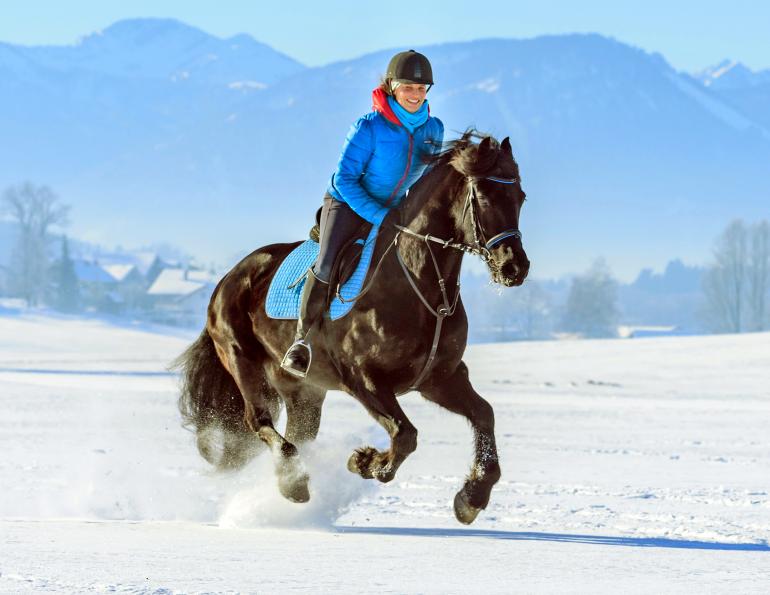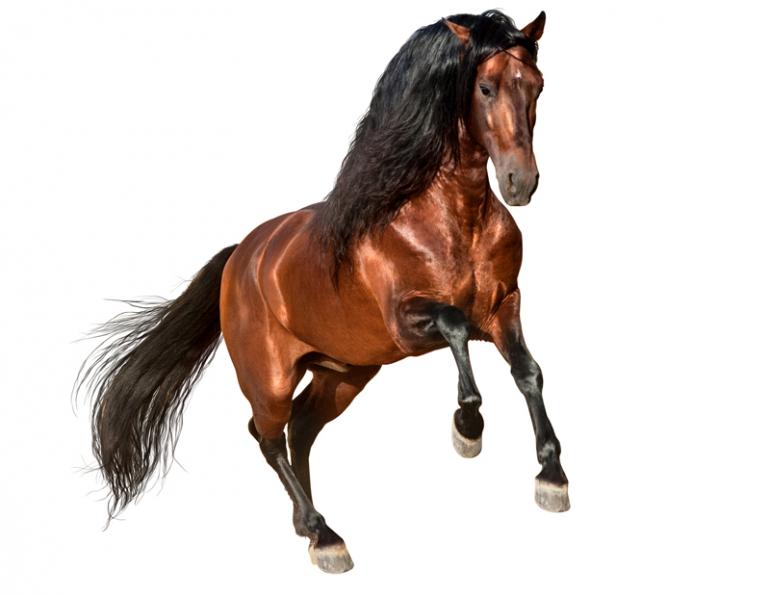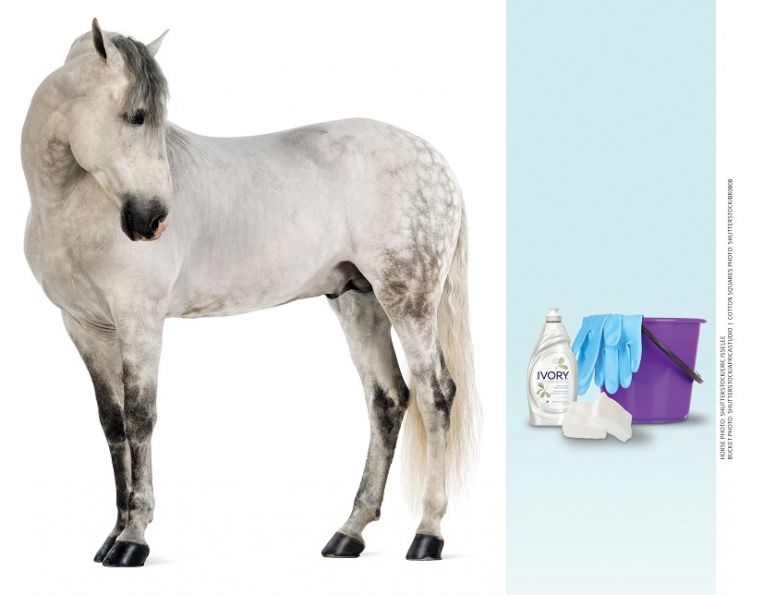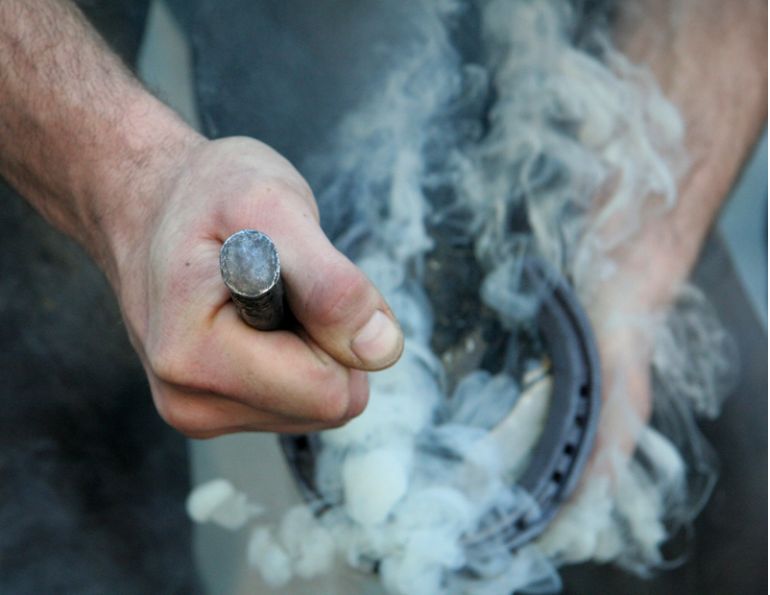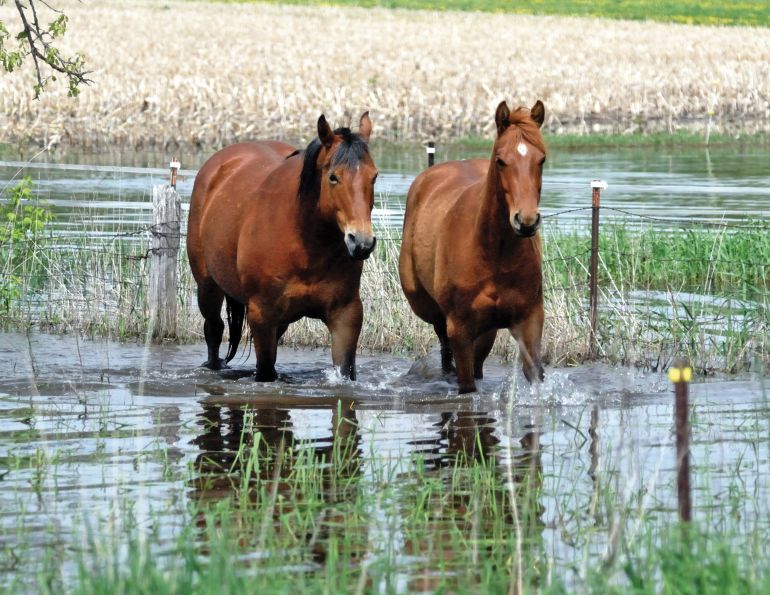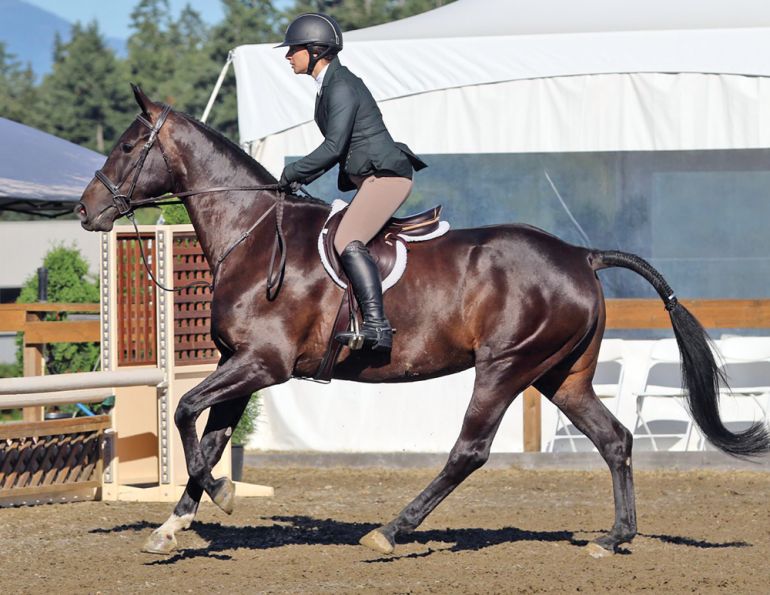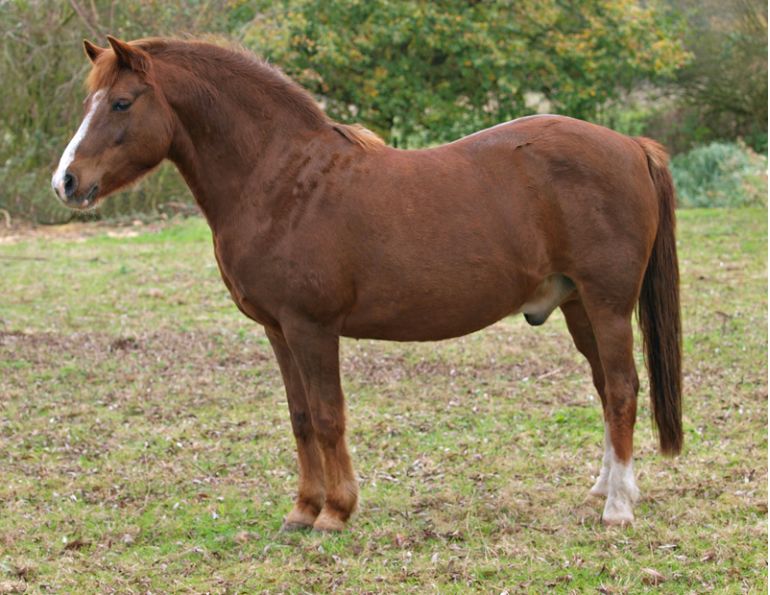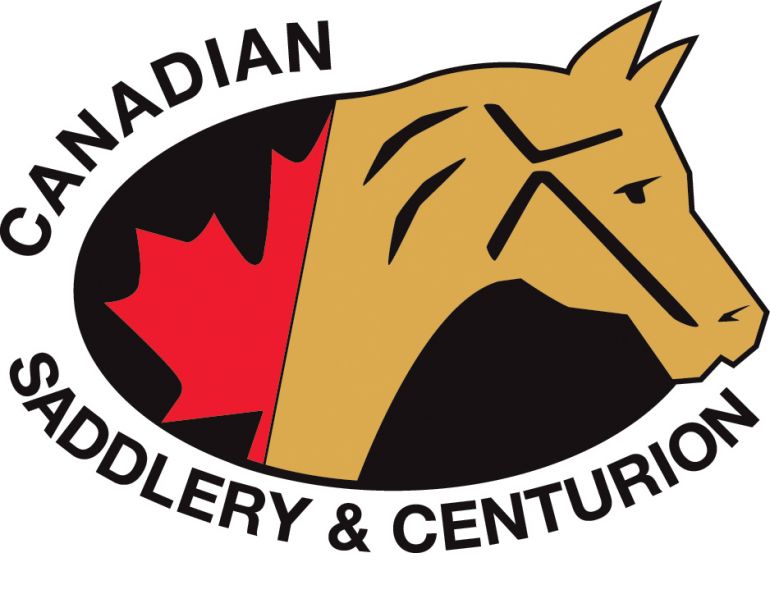By Kentucky Equine Research
Do you ride all winter, no matter how deep the snow gets, or do you hang up your saddle at the first cool breeze in autumn?
Do you pull your horse’s shoes, blanket him, or keep him in the barn during the cold months?
Do you cut his grain ration when he’s not working or feed more hay to keep him warm? If the winter season has caused any modifications in your horse’s exercise level or feeding plan, you will need to consider the following points as you bring the horse back into work in the spring.
#1 Check Blanketing
If horses have been wearing blankets all winter, keep an eye on daytime temperatures as the weather begins to moderate.Blankets may still be needed at night but often should be removed during the day to prevent sweating.
#2 Check Skin
As the horse sheds his heavy winter coat, look him over carefully for cuts or other problems. Even if you have been faithful with daily grooming, small injuries may have been hidden by long hair. Give the horse an all-over bath as soon as the weather is warm enough, thoroughly rinsing to remove all shampoo. Look for rain rot, ringworm, scratches, and other conditions that may have been encouraged by blankets and damp weather. Treat skin diseases, asking a veterinarian for help with any stubborn conditions that don’t respond to over-the-counter remedies.

The spring health checkup is an ideal time to have your horse’s teeth checked by your veterinarian or equine dentist.
Whether or not your horse was barefoot for the winter, he needs to start the spring with feet that are in the best possible condition. Schedule a farrier visit to be sure the horse is trimmed or shod correctly before increasing his exercise or training. Think about the work the horse will be doing and the terrain he will encounter. Will he need studs for soft ground, pads for hard or rocky terrain, or wedges or special shoes to accommodate injuries or conformational defects? Discuss these concerns with a farrier and get a veterinarian’s advice if needed.#3 Check Hooves
#4 Check Teeth
This should be done once or twice a year by an equine dentist or veterinarian. A dental check-up can prevent some training problems like head tossing and fidgeting, and will also help to ensure that your horse gets the most benefit from whatever he eats.
#5 Check for Parasites
Start or continue a schedule of deworming. Some owners prefer to do a fecal check to determine parasite infestation, while others simply buy and use popular deworming products. Check with a veterinarian if you are unsure about the right products and scheduling for your horse.
#6 Check Vaccinations
Consult immunization records or ask your veterinarian what shots your horse needs. The recommendations will vary according to the horse’s age (foals may initially need two doses of some vaccines while mature horses need only an annual booster); location (if a particular disease in not common in your area, your horse may not need protection); travel schedule (horses that never encounter other horses may be able to skip some shots); and special conditions in your area (the series of West Nile vaccinations needs to be completed well before mosquitoes are seen). There is some evidence that horses develop a stronger immunity and have fewer skin or metabolic reactions if vaccinations are spread out over several days or weeks instead of being given all at once.
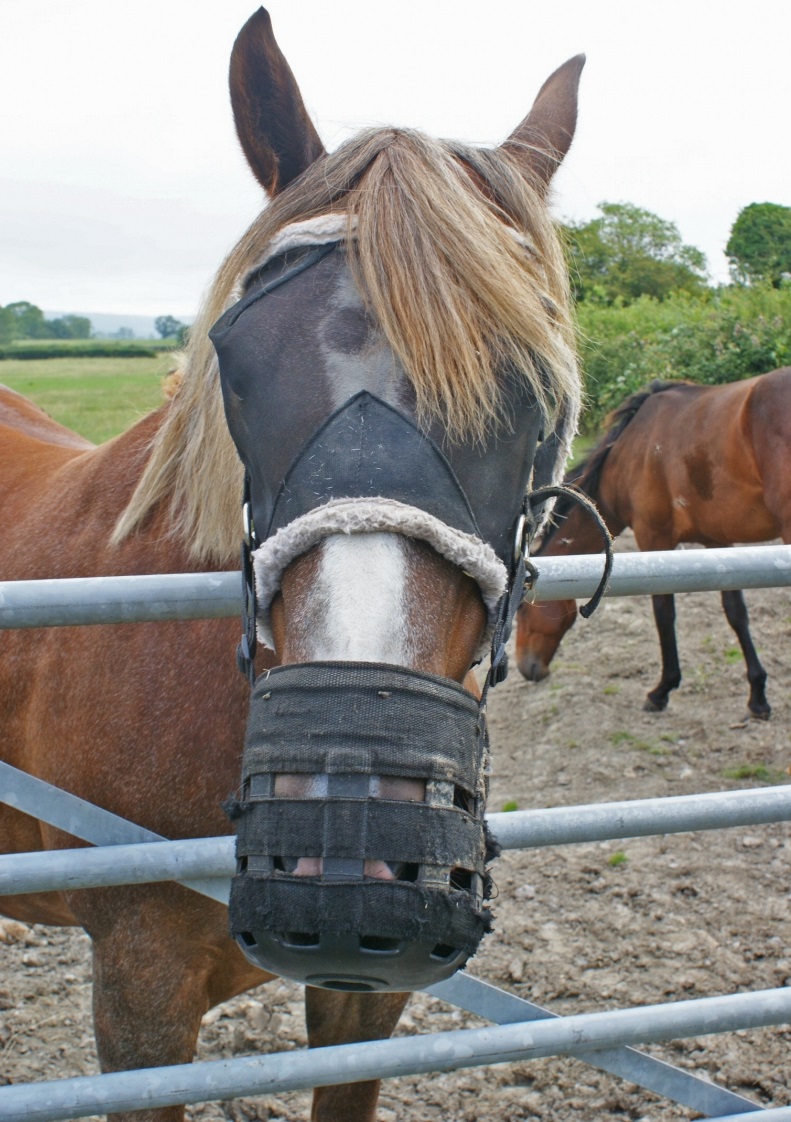
A grazing muzzle can limit grazing while allowing a horse to enjoy the companionship of other horses and lots of walking exercise.
If horses have been stabled through the winter and will now be turned out, walk the pasture to find hazards such as holes, trash, or low tree limbs. Clean water troughs and check for sharp edges. Carefully check gates and fences for loose or broken parts and repair any defects before letting horses into the field.
#7 Check Fences, Gates, Fields, Water Troughs
If horses have been stabled through the winter and will now be turned out, walk the pasture to find hazards such as holes, trash, or low tree limbs. Clean water troughs and check for sharp edges. Carefully check gates and fences for loose or broken parts and repair any defects before letting horses into the field.
#8 Check Tack and Equipment
Have blankets cleaned and repaired now so they will be ready for fall. Look over halters, saddles, bridles, and other equipment and repair or replace as needed before starting training or competition. Clean and condition leather to avoid irritating the horse’s skin.
#9 Monitor Grazing
Pasture time may need to be limited at first to avoid problems related to overconsumption of lush grass. Because fresh spring grass contains a high percentage of moisture and very little fibre, continue to offer horses hay for the first few weeks of grazing. Heavy, cresty horses and those subject to laminitis may be sensitive to the fructans (sugars) in rapidly growing grass. The use of dry lots or grazing muzzles can allow horses to get out of the barn without risking metabolic upsets.
#10 Check Condition
The resumption of training or exercise is a good time to evaluate your horse’s body condition. If possible, weigh the horse; otherwise use a weight tape as a rough measure of body weight. If a visual examination doesn’t tell you whether your horse is too fat or too thin, try a “hands-on” determination — generally you should be able to feel, but not see, the ribs of a horse that is in moderate condition. Record the horse’s weight and condition as exercise resumes and recheck the numbers periodically as you continue riding through the spring and summer to keep an eye on excessive weight loss or gain.
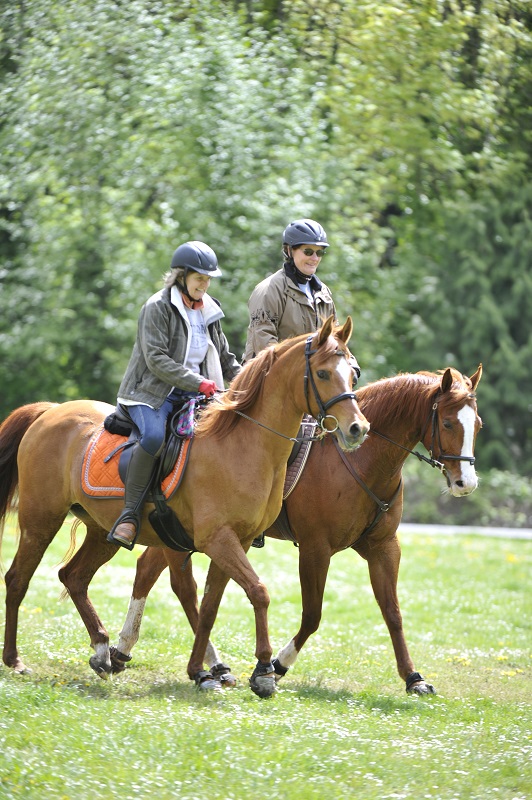
Bring your horse back to work gradually over a period of several weeks to avoid lameness and injury. Photo: Robin Duncan Photography
#11 Evaluate Feeding Program
Will you be asking your horse for a much greater level of exercise? If so, he may need more grain or a high-fat ration to meet his energy requirements. He may also benefit from electrolytes, a muscle recovery supplement, or a feed designed to minimize tying-up. In areas with extremely hot, humid summers, some sweet feed proponents change to feeding pellets to avoid problems with mould. Any modification of a feeding program needs to be made gradually over several days, blending new feed into old and allowing the horse to adjust to the new regimen.
#12 Begin Training!
Consider clipping a heavy winter coat if you are planning to get back into a regular riding routine. A horse carrying a long winter coat will heat up faster and take longer to cool down and dry out on warm spring days. After clipping, your horse may need to be blanketed on cold spring days or if the temperature drops at night.
If the horse has been off work for the winter, you need to schedule steadily increasing work to bring him back into condition. Start with brief periods of walking, moving to longer rides and faster gaits over a period of several weeks.
Conditioning involves not just the horse’s muscles but also his lungs, heart, tendons, ligaments, and bones. By progressing slowly and paying attention to the horse’s reactions, you can often avoid lameness and injuries.
Main article photo: Photo: Canstock/Zuzule
This article originally appeared in the April 2011 issue of Canadian Horse Journal.




